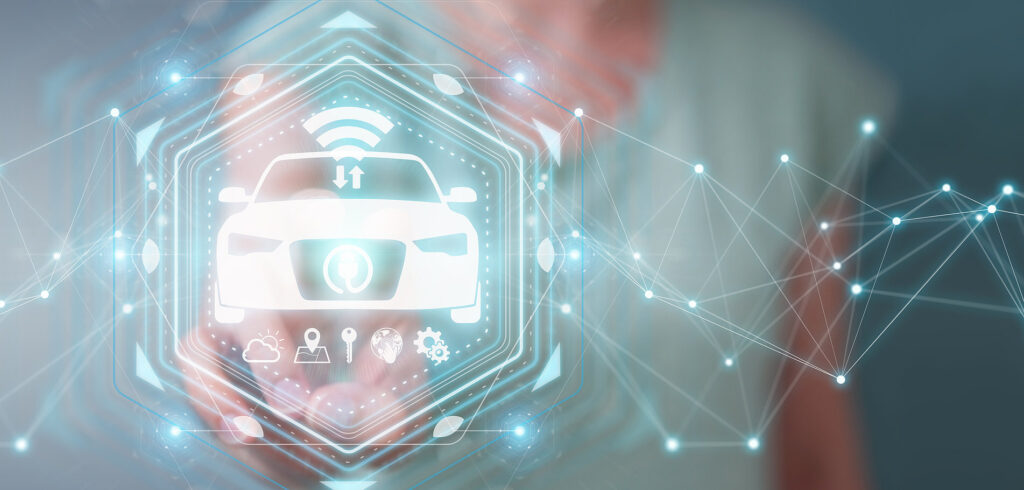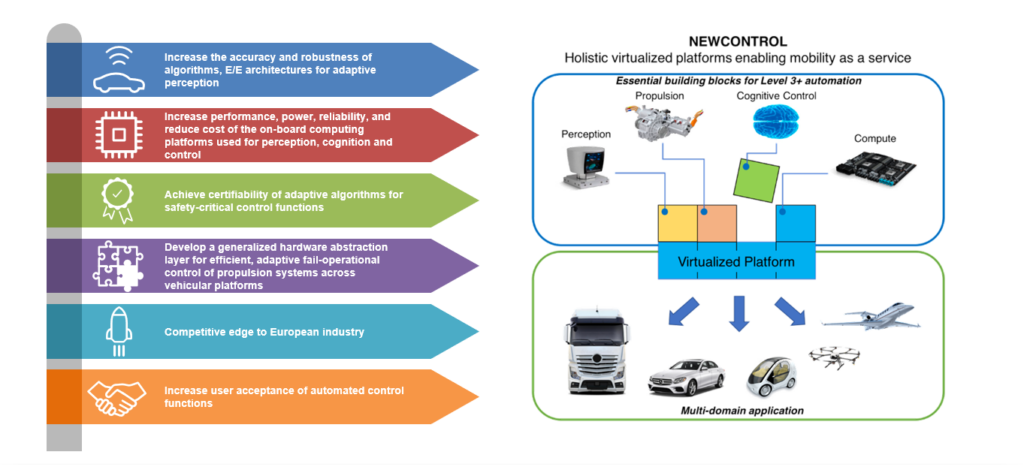ITML, as a technology provider in NewControl, is participating in the activities related to Embedded Systems, Computing Platforms and Algorithms and System Integration. In addition, ITML is leading the efforts on end-user acceptance and trust in automated driving functions relevant to ethics, safety, security, and privacy.

The automotive industry during its 130-year history is facing a transformation that is described precisely by its own name. As usual for a technological term, the etymology of automotive reveals that it is about a hybrid word consisting of auto- “self,” from Greek, and motive (adj.), from Latin. Everything started from the horseless carriage in 1860s and the goal is to reach the driverless smart transportation. Nowadays, that achievements and future advancements in the technological framework are the variables in an equation where the human factor, Whether a consumer or not, is considered a constant. Lately, the pandemic’s situation is taken into account as a new case scenario for such equation, that it has to be solved. The number of companies, more than 40 in number, that are making investments in the autonomous vehicle technology is an indicative of the future that is really ahead of us in the coming years.
The initial goal of any technological approach, and so for autonomous cars, is how societies and their people will be benefited and in which ways. The automated driving system (ADS), either in the test tracks or in the public streets, has to sense almost everything in a comprehensive way, it has to communicate in a twofold way, it has to react on any environmental changes, and finally to support the functionality to interact in more than one mode. Semi-autonomous vehicles, where driver assistance is needed, are already moving in the open highways, but fully autonomous vehicles, where the driver is absent, are expected to hit the roads by 2030.
Such a transportation revolution, in order to be fully adopted, has to assure that travelling either in short or long distances is always a low-cost experience. At the same time, it has to be enjoyable and customizable to users and traveling needs. A number of analysts are describing the opportunities and capabilities in autonomous vehicles in numbers. The estimation of McKinsey is that in 2030 the portion of fully autonomous vehicles that will be sold will be up to 15% of all new vehicles. In addition, a forecast made for the global autonomous vehicles market foresees that by 2025 the relevant market will be $96B. In order for the market to reach such numbers, technological progress has to be linked with relevant investments. Sensing, controlling, mapping, cameras, LIDARs, connecting and processing systems are some of the technologies that cover the wide range of integrated systems of an autonomous vehicle. An assessment from Goldman Sachs regarding technology demands presents that by 2035 the global value for LIDARs, radars, cameras and controls will be $80B, $40B, $31B and $17B, respectively.
Autonomous driving, similarly to every evolving organism, is facing a number of challenges that need to be addressed one by one. In order for the impact of autonomous vehicles to be significant, technology leaders have to assure that systems, in hardware form and also software, are operating in an acceptable way. Another challenge is the vehicle to sense and be connected with the entire environment. That is the one inside the vehicle, but of course, also the one surrounding the vehicle. The next step is the automated systems to make judgments in an accurate way. So, verification and validation processes, during repeated tests must be successful. The above-mentioned challenges are mainly characterized as on-board ones and are separated in hardware and software levels. In a hardware level, the basic elements are camera/optics, radars, LIDARs, ultrasonic sensors, system on chip (SOC), actuators and GPS. The software components are working in tasks such as localization and mapping, perception and object analysis, prediction, decision-making, overall operation and supervision of the systems and the platform inside the autonomous vehicle. R&D efforts from experts across industry and academia have to be focused in order to continuously add software in the vehicle environment, to support and follow, if possible, the offerings of Artificial Intelligence and step by step move from the approach of one device per function to the idea of a common platform that supports many functions.
If we summarize the overall operation of an autonomous vehicle in one or two phrases, perhaps this would be that we want the vehicle to sense, to think and learn, to act and decide, and finally to communicate and be connected with the user in an acceptable, safe, and enjoyable way. Aligned with the above description, the NewControl project will strive until the end of 2022 to deliver fail-operational holistic virtualized platforms for vehicular subsystems that are critical to automated driving (SAE Levels 3+), enabling mobility-as-a-service for next-generation highly automated vehicles. OEMs of Tier-1 and Tier-2 from semiconductor and automotive industry are collaboratively working for the realization of intelligent vehicular building blocks that will be demonstrated in perception systems, in decision making and control systems, invalidation, certification and qualification as well in a demonstrator examining the user acceptance and trust in automated driving functions. The overview of NewControl and the main targets are depicted in Figure 1. These targets will be fulfilled via the 11 demonstrators inside NewControl.

In NewControl, ITML has a dual role. As usual, and based on our expertise, ITML is involved in the technical development of the project and, in parallel, is leading the efforts on end-user acceptance activities. More specifically, ITML will develop algorithms and software for predictive control, based on ML and DL techniques. The new algorithms for path planning and motion control will be demonstrated in both urban and suburban use cases, involving stories taken from real streets such as parking or overtaking. At the same time, indicators and metrics are needed to record the opinion, in terms of feelings and societal value (e.g., safety, security and privacy), of users. To do so, an assessment and simulation framework, both for the vehicle and the driver, will be developed to estimate the complete user acceptance.

When NewControl initiated its R&D activities, “pandemic” was an unknown word for any technical development that is targeting to autonomous vehicles and of course the societies across the globe were wondering how this situation will affect their people. Now, COVID-19 is an extra factor that somehow complicates the landscape on self-driving vehicles. It is very possible that during 2020 the sentiment of the user (or possible consumer) of an autonomous vehicle to be characterized as “mixed” or in some cases “negative”, but it is very early to be making such a statement. However, it is worth to be said that the idea of automated vehicles that are used for contactless delivery of goods, products or services sounds like a melody in the ears or users and people behind the new business plans for 2021.

This project has received funding from the ECSEL Joint Undertaking (JU) under grant agreement No 826653. The JU receives support from the European Union’s Horizon 2020 research and innovation programme and Germany, Austria, Netherlands, France, Finland, Italy, Belgium, Czech Republic, Spain, Cyprus, Lithuania, Turkey
The contents of this publication do not necessarily reflect the opinion of the European Union. The article reflects only the author’s view and the sole responsibility of this publication lies with the author. The Electronic Component Systems for European Leadership Joint Undertaking (JU) is not responsible for any use that may be made of the information contained therein.